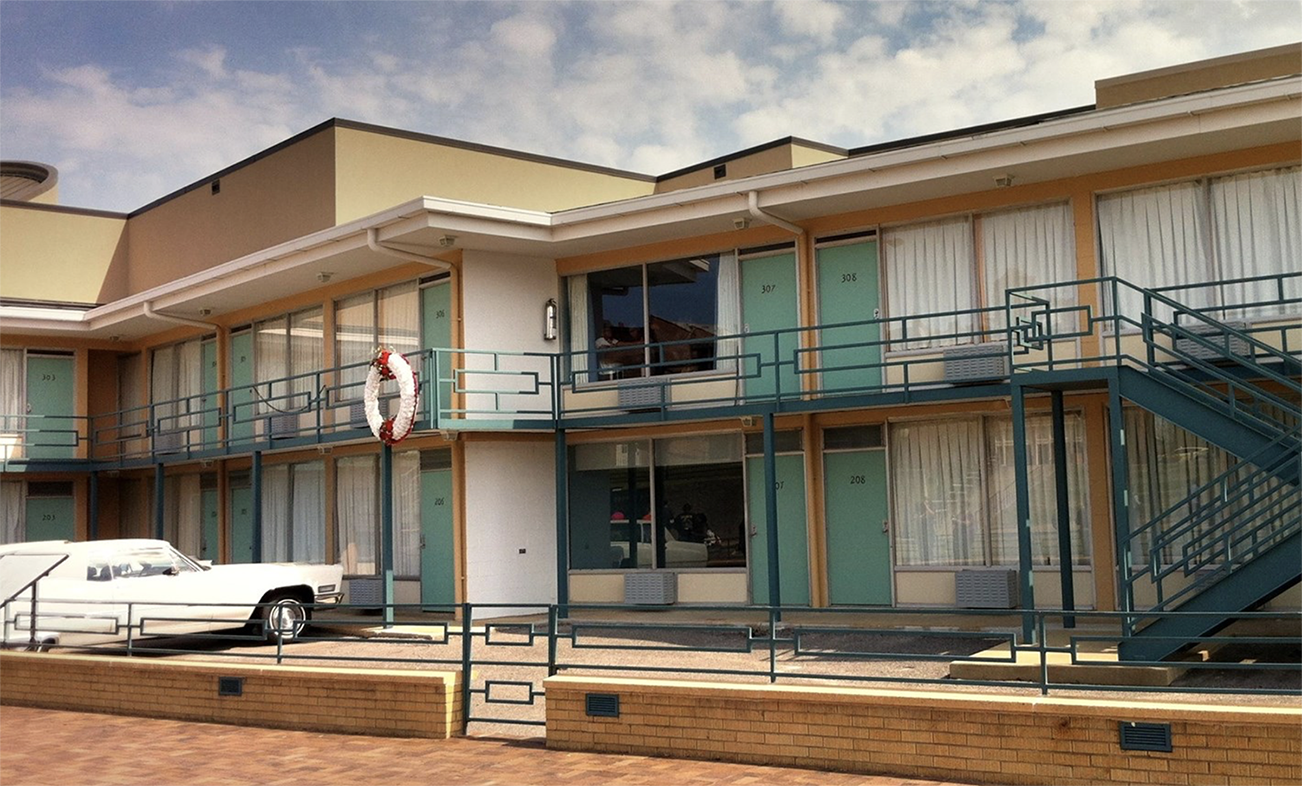On the day of his birthday, January 15 is the day we reflect on the legacy of the great Dr. Martin Luther King, Jr.
Here in Memphis, we honor that legacy at the National Civil Rights Museum at the Lorraine Motel, the site of Dr. King’s murder by an assassin’s bullet on the evening of April 4, 1968. The motel is a local, national, and global treasure, a pilgrimage for millions worldwide.

Histories of the motel are plentiful. Here are a few primary sources that capture brief histories of this historic place:
The Lorraine Motel, from the National Park Service National Register of Historic Places
Built in 1925, the Lorraine Hotel was a typical Southern hotel accessible only to whites in its early history; it was renamed the Lorraine Motel after the second floor was added. However, by the end of World War II, the Lorraine had become one of the few black establishments, and one of the only hotels providing accommodations to African Americans. Early guests to the Lorraine included Cab Colloway, Count Basie, and other prominent jazz musicians, in addition to later celebrities such as Roy Campanella, Nat King Cole, and Aretha Franklin. Partly because of its historical importance to the black community of Memphis, Martin Luther King chose to stay at the Lorraine during the 1968 Memphis sanitation workers strike.
Read more about the Lorraine Motel from the National Park Service>>
1968: “A Crime Scene Turns Into a Memorial to Dr. King,” from the New York Times Unpublished Black History

Less than two weeks before George Tames took this photograph in 1968, the hotel balcony he captured was full of life. The Rev. Dr. Martin Luther King Jr. was making plans for dinner and discussing music for a coming meeting, requesting “Take My Hand, Precious Lord.”
Then came gunfire. Dr. King fell. He was pronounced dead an hour later.
Absence is a story that’s never easy to tell, in word or image. News photography in particular thrives on drama, and so it is hardly a surprise that the most memorable images of Dr. King’s death come from just after he was shot in Memphis on the evening of April 4, 1968.
Now, though, a photo like the one above somehow takes on more meaning. Like the civil rights museum that occupies the old Lorraine Motel where he was shot, a small and intimate memorial in its own right, the image demands contemplation.
Read more from the New York Times Unpublished Black History>>
Lorraine Motel, from the Society of Architectural Historians
Sited south of Memphis’s central business district, the building was erected circa 1925. By the time Walter Bailey, an African American businessman, purchased the hotel two decades later, the demographics of Memphis were changing. After Bailey renamed the establishment for his wife Loree and the song “Sweet Lorraine,” it became prime lodging for African American visitors to the segregated city, and guests in the post–World War II period included prominent musicians and community leaders, who also patronized the hotel’s cafe. Beginning in 1952, the Lorraine was featured in annual issues of The Negro Travelers’ Green Book, a guide to facilities that welcomed and catered to African American motorists in an era when such information was necessary for personal safety.
Bailey expanded the Lorraine in 1955, adding sixteen rooms in a two-story concrete block wing built east of the original hotel. Twelve more rooms on a second story were added later, as were more guest rooms and drive-up access—turning this into a modern motel. The two-story structure was typical of motor hotels of the period, which catered to auto traffic with parking right outside one’s room and large plate glass windows that fronted exterior walkways. At the Lorraine, open metal stairs gave access to the rooms on the second level of the motel. Though architectural exuberance was not uncommon in motels of the 1950s, the Lorraine is stylistically modest. The exception is its multistory sign, which can be described as a Memphis response to California Googie. Towering over the motel, the open metal turquoise frame supports a red chevron at the top, a yellow oval with “Lorraine” in black script, and five white circles that spell “motel” in red capital letters.
Read more from Lorraine Motel, Society of Architectural Historians>>

For more information, visit the National Civil Rights Museum at the Lorraine Motel

